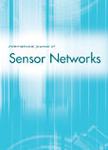版权所有:内蒙古大学图书馆 技术提供:维普资讯• 智图
内蒙古自治区呼和浩特市赛罕区大学西街235号 邮编: 010021

作者机构:Nanjing Univ Informat Sci & Technol Nanjing 210044 Jiangsu Peoples R China Jiangsu Lightning Protect Ctr Nanjing 210007 Jiangsu Peoples R China PLA Univ Sci & Technol Coll Commun Engn Nanjing 210009 Jiangsu Peoples R China
出 版 物:《INTERNATIONAL JOURNAL OF SENSOR NETWORKS》 (国际传感器网络杂志)
年 卷 期:2018年第27卷第4期
页 面:250-258页
核心收录:
学科分类:0810[工学-信息与通信工程] 08[工学] 0812[工学-计算机科学与技术(可授工学、理学学位)]
基 金:National Key R&D Program of China [2018YFB1003205] National Natural Science Foundation of China [U1536206, U1405254, 61772283, 61602253, 61672294, 61502242, 71401176] PAPD fund [KYLX16_0926] Jiangsu Basic Research Programs-Natural Science Foundation [BK20150925, BK20151530] Priority Academic Program Development of Jiangsu Higher Education Institutions (PAPD) fund Collaborative Innovation Center of Atmospheric Environment and Equipment Technology (CICAEET) fund, China
主 题:k-barrier coverage particle swarm optimisation artificial immune WSNs wireless sensor networks
摘 要:Barrier coverage of wireless sensor networks (WSNs) has been an interesting research issue for security applications. In order to increase the robustness of barriers coverage, k-barrier coverage is proposed to address this issue. In this paper, the k-barrier coverage problem is formulated as a global optimisation problem solved by particle swarm optimisation (PSO). However, the performance of PSO greatly depends on its parameters and it often suffers from being trapped in local optima. A novel particle swarm optimisation program named AI-PSO (artificial immune-particle swarm optimisation) is designed and the model of k-barrier coverage problem is proposed to solve this problem. AI-PSO integrates the ability to exploit in PSO with the ability diversity maintenance mechanism of AI (artificial immune) to synthesise both algorithms strength. Simulation results show that the proposed algorithm is effective for the k-barrier coverage problems.